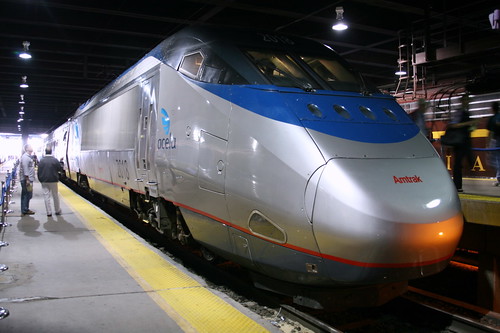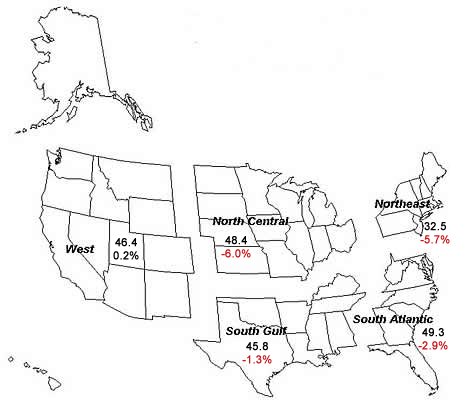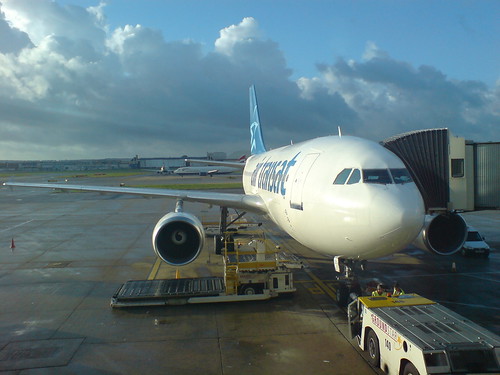GAO’s Report on HSR Recommends Significant Federal Role
(Source: The Transport Politic & GAO; Photo: Swanksalot@flickr)
General Accountability Office sees federal involvement in planning and financing as necessary for high-speed rail construction
The U.S. Government Accountability Office (GAO), Washington’s in-house accounting firm, studied high-speed rail in its most recent report (”High Speed Passenger Rail: Future Development Will Depend on Addressing Financial and Other Challenges and Establishing a Clear Federal Role,” PDF) and came to some significant conclusions about how best to proceed in implementing fast train links in the United States. GAO’s report also indicated strong government support for investment in high-speed rail in corridors of distances between 100 and 500 miles, which the study indicated were best-suited for such connections.
The Transport Politc states that “GAO’s push to incorporate high-speed rail into the broader ground transportation program is elemental for the future of rail in the U.S. That’s because – as GAO’s study indicates – fast trains need to be put into comparison with highways and airports when considering the manner in which Americans will get around in the future. Without such direct, cross-modal comparisons, there is little chance for establishing whether rail, road, or air connections are priorities; without the comparison, we get the status quo, where funding allocations are close to random and where few question which transportation mode fits best where.
Recommendation #1: To ensure effective implementation of provisions of the PRIIA related to high speed rail and equitable consideration of high speed rail as a potential option to address demands on the nation’s transportation system, the Secretary of Transportation should, in consultation with Congress and other stakeholders, develop a written strategic vision for high speed rail, particularly in relation to the role high speed rail systems can play in the national transportation system, clearly identifying potential objectives and goals for high speed rail systems and the roles federal and other stakeholders should play in achieving each objective and goal.Recommendation# 2: To ensure effective implementation of provisions of the PRIIA related to high speed rail and equitable consideration of high speed rail as a potential option to address demands on the nation’s transportation system, the Secretary of Transportation should, in consultation with Congress and other stakeholders, develop specific policies and procedures for reviewing and evaluating grant applications under the high speed rail provisions of the PRIIA that clearly identify the outcomes expected to be achieved through the award of grant funds and include performance and accountability measures.
Recommendation# 3: To ensure effective implementation of provisions of the PRIIA related to high speed rail and equitable consideration of high speed rail as a potential option to address demands on the nation’s transportation system, the Secretary of Transportation should, in consultation with Congress and other stakeholders, develop guidance and methods for ensuring reliability of ridership and other forecasts used to determine the viability of high speed rail projects and support the need for federal grant assistance. The methods could include such things as independent, third-party reviews of applicable ridership and other forecasts, identifying and implementing ways to structure incentives to improve the precision of ridership and cost estimates received from grant applicants, or other methods that can ensure a high degree of reliability of such forecasts.







